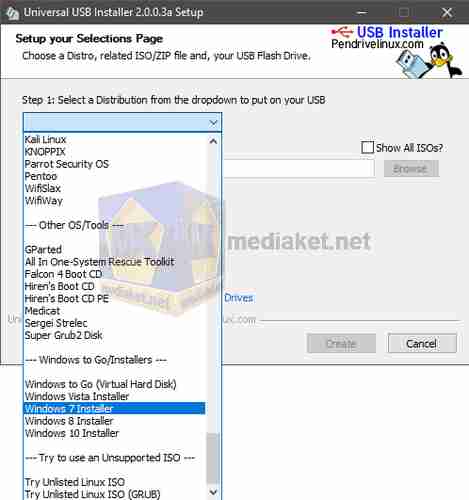
So, although the kernel itself is a program and it’s written in C with some assembly, it’s stored on our system as a compressed image called vmlinuz. The vm part is a hark back to when virtual memory support was a big thing, and slapping vm at the front told everyone that the system supported virtual memory, and then the z or the zed at the end tells us that the kernel image is a compressed image, which keeps it small. Yes, it’s old, but it’s rock-solid, and it’s for x86/圆4 architectures.

Next, the kernel image is called vmlinuz us the version of the kernel and the architecture, so for us, a version of the 2.6.32 kernel. We can simply give it a standard UNIX file system path. Remember, by the time we have got to nf we are running with the stage 2 boot loader, which knows all about file systems, so we don’t need to use anything like blocklist notation. So, first of all, the location of the kernel is specified based on its location within a file system.
KALI PUT GRUB ON USB KEY PLUS
This is where we specify the location of the kernel plus any boot-time parameters that we want to pass to it, and we will spend a bit of time here. And just like the kernel can, GRUB can also address a device without carrying about partitions, so the equivalent of devsda in the instance would be hd0 wrapped in parentheses, of course. Now, if the kernel were addressing this device, it would use sda3. So, what we have got here is the third partition on the first hard drive on the system, We would use hd0 to address the MBR on the first device, hd1 to address the MBR or the volume boot record on the second device. It’s really important when a working directory with the MBR. Then we need a comma, and then we give it the partition number.Īgain 0 is the first partition. And remember GRUB is a proper computer system. Then the first number here is the device number as per the BIOS, so 0 being the first disk device on the system. As far as GRUB is concerned, they’re just all hard drives, so GRUB just names them all HD something. Now GRUB doesn’t care if it’s a SCSI (Small Computer System Interface) drive. Then we add the HD, which is short for hard disk. Now then, by default, the way that GRUB addresses disk drives and partitions are different from the way that the kernel does,įor our RHEL installation here, we have got hd0, 2. This allows us to specify the root directory for GRUB.
KALI PUT GRUB ON USB KEY WINDOWS
Just put others, so we manually changed it to Windows 8. GRUB didn’t recognize the operating system. You can put pretty much whatever you want in here. We need a minimum of three lines, title, root, and kernel, for each operating system, and for Linux, we need another line, initrd. So, back to our GRUB config file, and we have got two operating systems defined, RHEL 6 and Windows 8. Now let’s have a quick look at the operating specific setting. We can add a few more if we need, such as fallback options just in case the default option fails, If we don’t press a key, then the system just boots, and more often than not, to be honest, the hidden menu option is usually specified.

Okay, if we hit a key, then we get back to the boot menu that we just saw. Multi-booting can be a bit of a complicated thing, so a hidden menu lets us hides that menu, and instead, all we get is this. Okay, see here how we can see the menu with the different operating system choices.Īnd at the bottom, here we have got a timer telling us how long we have got until the boot continues. So, we will look at it first without the hidden menu. Let’s take a look at what the early boot process looks like with and without this hidden menu option. Here, the hidden menu option hides the menu of OS (Operating System) choices unless we hit a key.

Then splash image, well, that just puts a custom splash image up behind the boot menu, not normally that important other than maybe for branding. Well, this tells us that unless we interrupt the boot process and tell GRUB otherwise, it will boot the first operating system option that we have got specified below, so for us, that’s RHEL 6 Timeout = 10 tells GRUB to give us 10 seconds during which we can press a key to interrupt the boot process.
KALI PUT GRUB ON USB KEY WINDOWS 8
Now, in our example, we have got settings for two operating systems, Windows 8 and RHEL 6.īut let’s take a look at the global setting first.

Let’s break it down into its major component.Īt the top here, we have got kind of the global settings,Īnd then below this at the bottom, we have got the operating system specific settings. So let’s go see what the file looks like.


 0 kommentar(er)
0 kommentar(er)
